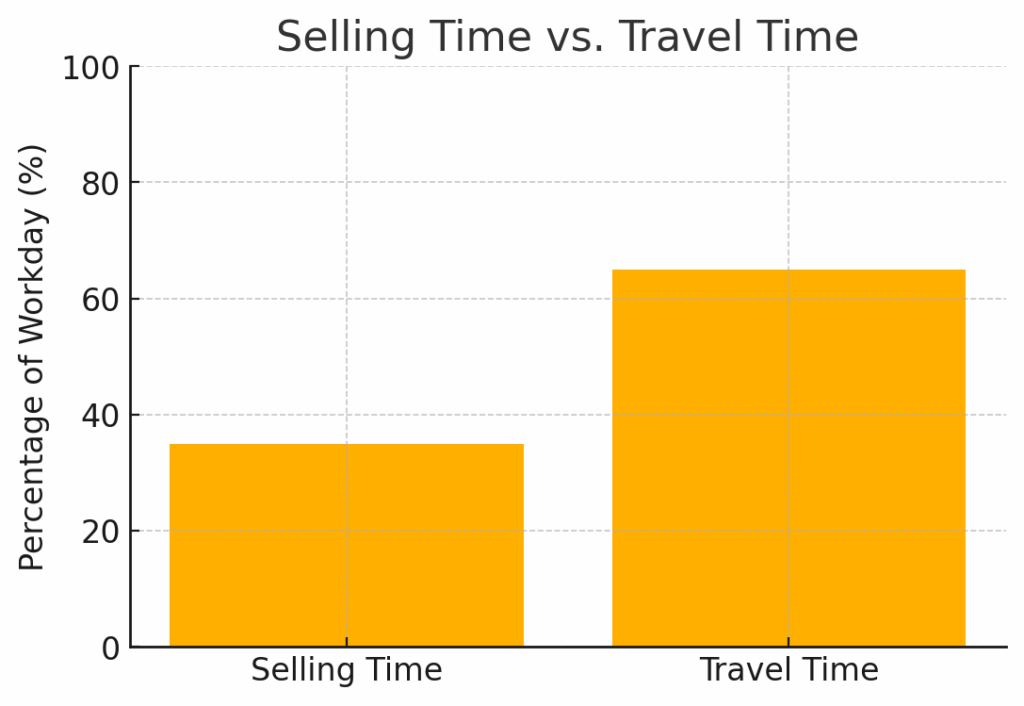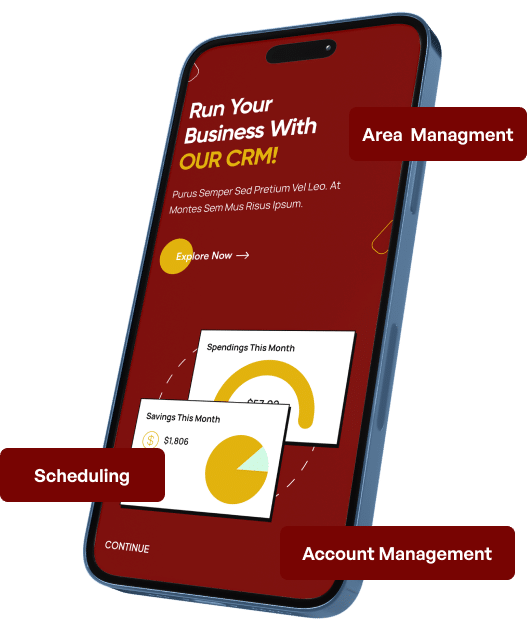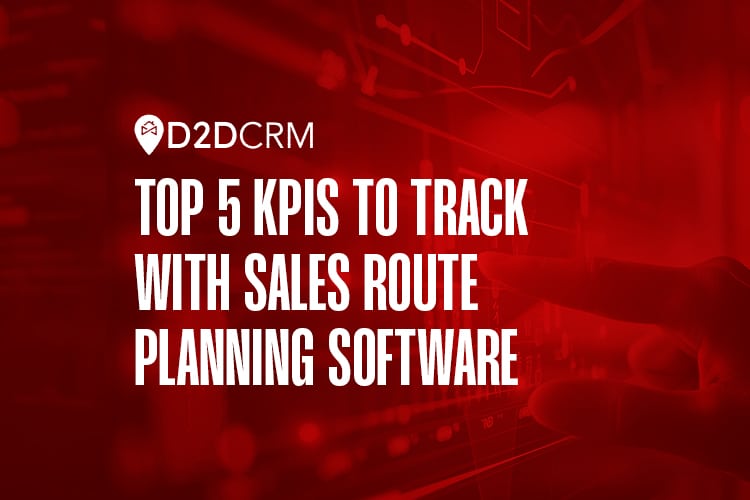Quick Take
Optimizing your field‑sales routes isn’t just about cutting gas costs—it’s about turning every minute behind the wheel into more face‑to‑face time, bigger deals, and happier customers. Modern sales route planning tools integrate with your CRM to slash travel time by up to 30%, boost selling time from roughly 35% to 50%, and cut fuel bills by 15–20%, all while keeping reps motivated with real‑time stats and leaderboards.
Sounds unbelievable? Its entirely possible!
Track these improvements with five key KPIs:
- Selling vs. travel time
- Visits (or Meetings) per Rep per Day/Week
- Lead Conversion Rate
- Time per Visit
- Fuel Cost & Mileage Reduction
What Makes Route Optimization a Big Deal
Even the savviest door‑knocker wastes hours lost in traffic, hunting addresses, or juggling spreadsheets. Research shows field reps spend only about 35.2% of their day selling, with a whopping 64.8% stuck in non‑selling tasks like driving and admin work.
McKinsey reports that boosting productive field‑seller time by just 25% can translate into a 20% jump in sales growth and a 40% cross‑sell lift in two months.
1. Selling Time vs. Travel Time
If your selling time vs travel time looks like this, you might be in trouble:

Why Travel Time Matters
Time spent on the road can be one of the biggest drains on a sales team’s productivity.
A report by McKinsey shows that field sales reps spend nearly 45% of their day driving between appointments, which eats into valuable selling time. Sales route planning software reduces this time by suggesting the most efficient routes, allowing your team to spend more time with leads.
How to Track Travel Time
Calculate the percentage of total work hours spent in customer visits vs. in transit, using GPS timestamps and CRM logs.
Your D2D sales software should provide data on daily travel time for each rep.
Target: Shift from ~35% selling / 65% travel to at least 50% selling / 50% travel. Sustained gains here free reps to book more appointments and build relationships.
Regularly reviewing this metric can reveal inefficiencies and help adjust routes for maximum productivity.
2. Visits (or Meetings) per Rep per Day/Week
Why Sales Visits Matter
The more doors your sales reps knock on, the higher the chance of conversions. This KPI tracks the number of leads each rep visits daily, giving insights into their activity levels and helping you evaluate if they’re maximizing their time.
How to Track Sales Visits
Set daily, weekly, or monthly sales visit goals for each rep and track their performance against these benchmarks. Comparing reps’ visits can also identify top performers and pinpoint those needing additional coaching.
Benchmark: A 20–30% increase often follows route optimization, reflecting more strategic coverage.
3. Lead Conversion Rate
Why Lead Conversion Rate Matters
The lead conversion rate measures how many leads become customers, clearly showing how well your reps are closing deals. This metric isn’t just about quantity—it’s about engagement quality with each lead. A high conversion rate indicates that your reps spend time on high-potential leads and use effective sales techniques.
How to Track Conversion Rate
To calculate the conversion rate, divide the number of leads converted by the total number of leads contacted. Track conversion rates by area or territory to identify which regions have the highest engagement
According to Soma Metrics, higher conversion rates directly impact revenue, with a 10% conversion boost leading to an average 15-20% revenue increase.
Monitoring this KPI allows you to optimize every aspect of your sales process, from prospecting to closing, ensuring your reps focus on converting the most valuable leads.
4. Time per Visit
Why Time per Visit Matters
Spending too little or too much time with prospects can impact conversion rates. Short visits may seem efficient, but may leave prospects feeling rushed. On the other hand, spending less time with each lead can lower the overall number of daily visits. Finding the sweet spot is key; tracking time per visit helps achieve this balance.
How to Track Time per Visit
Set target times for each type of visit, whether it’s an introductory meeting or a follow-up conversation. Your software can track the length of each visit, giving you an overview of average visit durations across your team.
Companies that monitor time per visit and adjust for optimal lengths often report 10-15% improvements in conversion rates.
By analyzing time per visit, you can refine your approach to customer engagement and ensure every interaction counts.
5. Fuel Cost & Mileage Reduction
Why Fuel Costs Matter
Fuel costs can quickly increase for field sales teams, especially when routes aren’t optimized. By tracking fuel costs per mile, you can measure the cost-effectiveness of each route and identify savings opportunities. Sales route planning software can reduce fuel costs by minimizing travel distance and avoiding high-traffic areas.
Plus, think of it this way: Every mile saved is money back in your pocket—and a greener footprint 🌱.
Industry gains: Companies routinely report 15–20% mileage cuts, translating into 10–30% lower operational expenses
How to Track Fuel Costs
Calculate your team’s total fuel expenses and divide by the miles driven. Compare this data over time to track trends and adjust your routing strategies to minimize expenses further.
Maximize Efficiency: Key KPIs to Monitor with Sales Route Planning Software
Maximize Efficiency and Drive Sales with D2D CRM

Leveraging D2D CRM to Track Your KPIs
Tracking KPIs is essential, but having the right tools to manage and optimize these metrics is what truly makes a difference. D2D CRM is designed to give your sales team the insights needed to perform at their best, from optimizing travel time to tracking conversion rates.
- Comprehensive Insights: Access detailed analytics for every KPI that matters, allowing you to make data-driven decisions that increase productivity.
- Easy-to-Use Platform: Our user-friendly interface makes it simple to monitor, track, and adjust KPIs as needed, helping your team work smarter, not harder.
Ready to improve your team’s performance? Try D2D CRM today and start tracking the KPIs that drive real results!


